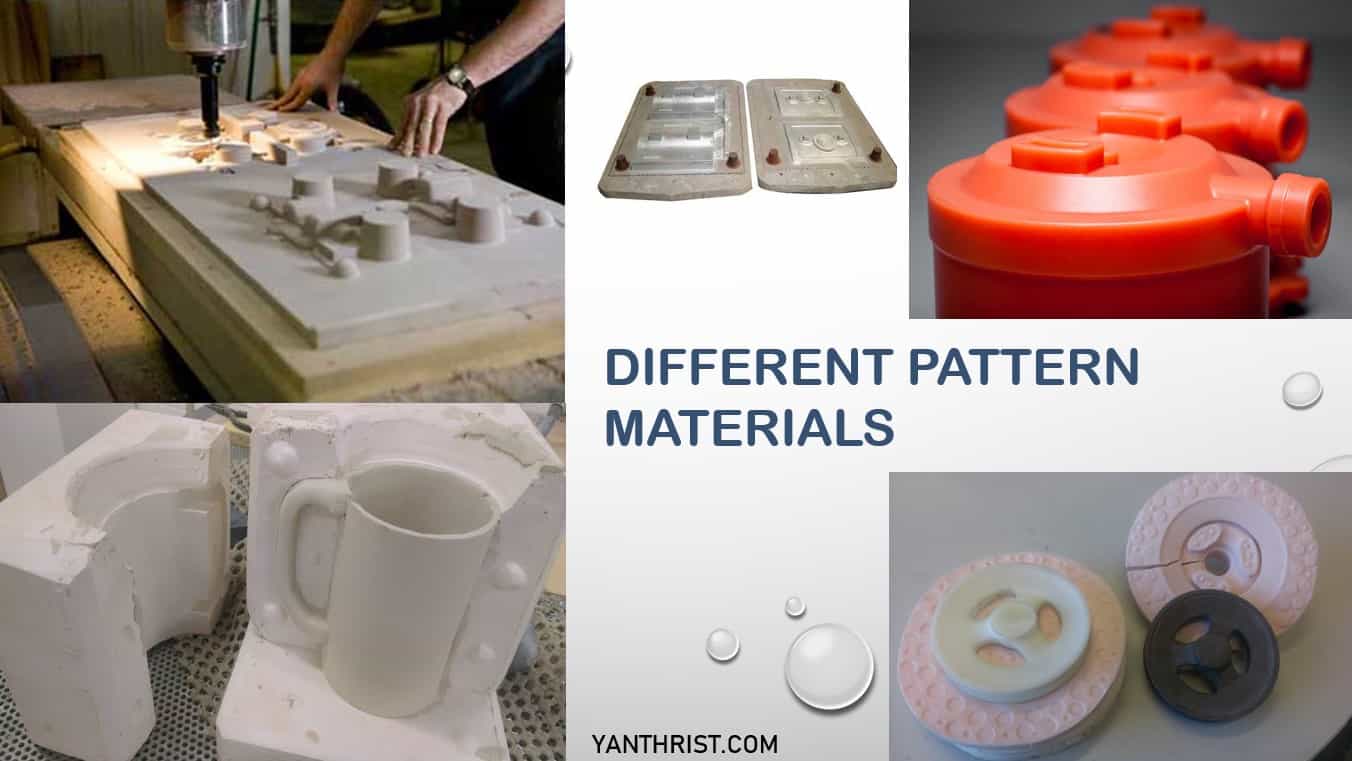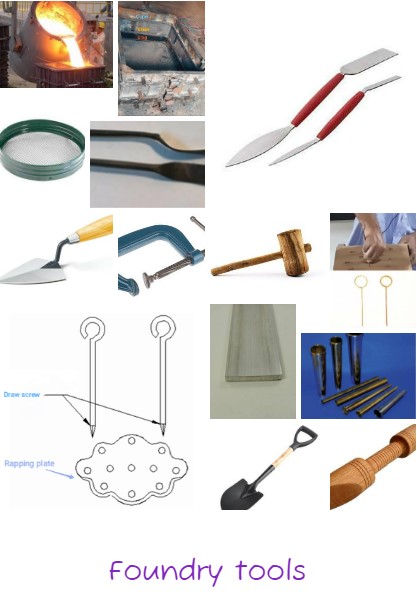Table of Contents
What is pattern?
A pattern may be defined as the replica of desired casting which when packed or embedded in a suitable moulding material with some extra modifications (i.e Different allowances, Spece for core prints) produces a cavity called mould. This cavity when filled with molten metal produces the desired casting after solidification of poured metal.
Material used for making pattern
- WOOD
- METALS
- PLASTER
- PLASTIC
- WAX

A. WOOD
The wood is the most populer material used for pattern making due to its low cost and easy availibility.
Advantage-
- Wood is the mostly used pattern materials because of it’s various advantages as following-
- it can be cut in different shapes from normal to difficult.
- It’s very light weight.
- Good surface finish can be achieved by Planning or sanding.
- it’s easy to work and quickly available.
- It can be preserved by coating of shellac-vernish.
Disadvantage-
- it’s affected by moisture easily.
- It’s damaged quickly after some uses due to sand and water absorption.
Commonly used Wood- 1. Mahagoni, 2. Teak, 3. Sai, 4. Shishu, 5. Pine, 6. Deodar etc
B. METALS
Metal patterns are mainly used where dimensional accuracy is prime priority. metal pattern in industry used for large scale production.
Advantage–
- Metals are used as pattern material material where the number of casting is very high
- Greater accuracy in dimension can be achivable.
- it has much longer life then wooden pattern.
- it does not affected by moisture and sand abrasion compared to wooden pattern.
Disadvantage-
- metals pattern are costly
- metal patterns are most costlier than wood
- to get complicated shape and surface finish machineing work is required that is at more cost to the pattern
- it is heavy weight it is heavier than wooden pattern
- most of pattern materials gets rusted due to oxidation takes place.
Commonly used metals- 1. Cast iron, 2. Brass, 3. Aluminium, 4. White metal.
YOU CAN ALSO READ MOST IMPORTANT 8 PROPERTIES OF MOULDING MATERIALS.
C. PLASTER
Plaster is mainly used in small job production where Product shape is complicated.
Advantage-
- Plaster are mainly used for small complicated pattern.
- it used to make core boxes which has intricate shape and needed higher accuracy.
- it has High compressive strength.
- it can be easily cast into desired shape.
Disadvantage-
It should be handled carefully otherwise High chance of braking.
it is made of gypsum cement commonly called plaster of Paris.
D. PLASTIC
- Resistance of corrosion
- Less weight
- High strength
- Good surface finish
- high resistance to wear, low shrinkage
its made by thermosetting plastic by using mould made by Plaster of Paris
E. WAX
This pattern are mainly used in investment casting for the production of single piece casting. Pattern always made from two halves. After mould prepared mold is inverted then heat applied to drain out wax.
Compare between plastic and wax as pattern material-
Unlike plastic pattern, a particular wax pattern can not be used twice as when mould is prepared,it is melted and drain out of mould as liquid by applying heat. But it is recyclable wheather plastic pattern is made of thermosetting material it can’t be melted once solidified.
Property of a good pattern material–
- Easily worked,shaped and joined.
- light in weight.
- Strong ,hard, and durable so that it’s resistance to wear, abrasion, corrosion and chemical action.
- Dimensional stability in all situations like High temperature, Humid condition.
- Quickly available.
- Repairable and recyclable.
- Ability to get good surface finish.

